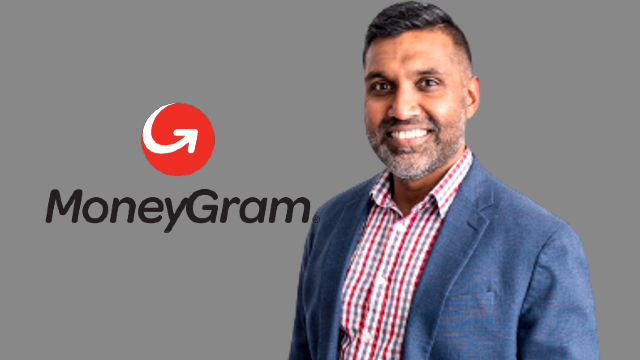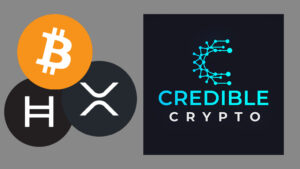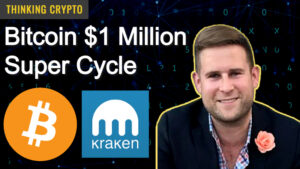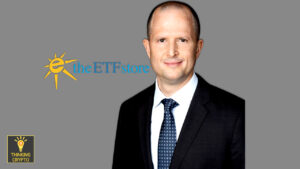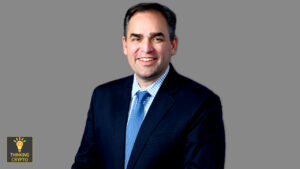Luther Maday is the Head of Fintech Strategy and Innovation at MoneyGram. In this interview we discuss how MoneyGram has adopted crypto, partnering with Stellar, using the USDC stablecoin for payment, working with Ripple in the past, crypto regulations, CBDCs, crypto bear market and much more.
Transcript
Welcome back to the Thinking Crypto Podcast, your home for cryptocurrency news and interviews. With me today is Luther Maday, who’s the head of FinTech Strategy and Innovation at MoneyGram. Luther, great to have you on the show.
- I’m super excited to be here, Tony, thank you for having me.
- Luther, I’m excited to speak with you because MoneyGram of course, has been adopting and integrating crypto technology. And I have a lot of questions for you and a lot of people wanna learn about it. But let’s start with your background. Where you from and where’d you grow up?
- I’m actually from India, but I grew up in Saudi Arabia ’til I was 15. And then, so I ended up moving to the US when I was 21 for my master’s.
- And what did you do before working at MoneyGram?
- Most of my background is pretty much in payments, so the payments is all I’ve done predominantly in merchant services, so the last role I had before MoneyGram was I was the senior vice president of payment strategy for Bank of America.
- And I’m always curious what, you know, everyone’s first encounter with crypto. What was your first encounter with crypto? Was it with Bitcoin and what was your aha moment?
- Yeah, it actually wasn’t with Bitcoin, right? So I, you know, just being in the payment space, I’ve heard, I, I had heard a ton about Bitcoin. I actually read the white paper right from Satoshi and I, you know, I just didn’t, I never invested till a buddy of mine start, started talking about Ethereum and just the concept of having programmable money with smart contracts, extra just, just found, I found very fascinating from that perspective. And that was actually my first foray is I started buying Ethereum back in 2016.
- Yeah. And we got the, the big Ethereum merge coming up this week. So we’ll talk a bit about that later. If you don’t mind me asking, what do you hold in your crypto portfolio?
- It’s still 90% Ethereum with a little bit of like Bitcoin and then some other coins, but predominantly all Ethereum.
- Mm. Let’s talk MoneyGram. So obviously payments company and we have crypto and blockchain technology being introduced as a disruptor now. So if you can take us behind a curtain, you know, how is MoneyGram viewing this technology and what are your plans to adopt or integrate or, you know, in your own way, create something new.
- Being an immigrant myself, Tony, you know, it, it, it doesn’t get lost on me how, how much of a lifeline MoneyGram is to the millions of families around the world. And, and with the inception of crypto, there was a lot of predictions that crypto was gonna change the remittance space and, and we completely believe that it will, right. We truly and heartily believe that it will, which is why we were kind of the first ones to adopt blockchain at, at scale for cross border money movement. And then we’re so optimistic around what the changes are that we really think that this is gonna bleed over not just from a person to person perspective, but it’s gonna have huge implications in the business to business space, like the B2B space or the business to consumer space on the B2C space, and then moreso in the treasury management and like the real time settlement of assets. So we are heavily investing and we’re really, you know, looking into how that could improve our operations and then operations for other entities.
- Now you have taken steps and there’s a partnership with Stellar and you’re using the USDC stablecoin. Can you tell us about that and how it functions?
- Sure. The, the partnership with Stellar Development Foundation has been fantastic for us. They’re, they’re a fantastic partner, but before we kind of dive into what the partnership is and, and how it can operate, I’ll kinda give you two facts. Right? There was a, there was a report that came out from the, the World Bank, I believe in 2017, that said that close to 2 billion people were either unbanked or underbanked around the world. Right. And then the other factoid is that 60% of the world’s population actually uses cash on a daily basis to kind of do the things that they need to do. So if you kind of take those two facts, it, what it basically says is that cash still plays a very, very important role in the majority of the, in, in the world’s population today, right? So when we take that back to this, the partnership with Stellar, the partnership with Stellar actually allows us to provide cash on and off ramps into crypto. So basically that allows consumers to go directly from cash into crypto and then be, be able to cash out from crypto directly into cash, you know, and that partnership was launched in June of this year, you know, and, and what that does for us and what it does for the Stellar Development Foundation is that it allows any wallet that is coded to the seller blockchain, to be able to provide their consumers with access to crypto on and off ramps at the 300,000 plus locations that MoneyGram has globally.
- Mm. So would it be that, you know, if I have that, I have the MoneyGram app and I can send someone, you know, cash payments in USDC versus the traditional way of doing it, is it, you know, is it two options that are available to me? And I apologize.
- No, no, no, not at all. Like, this is actually a very common point of confusion. So you’re not the first to kind of bring that up. The play here is, has, at this point, has nothing to do with money transfers, even though that is the backbone of what MoneyGram does. This, this play here is actually, it’s a, it’s a utility, it’s a crypto utility function, right? At the end of the day, if you look at most things that happen in the crypto space or in the defi space, everything happens within, within the ecosystem, but there’s no last mile, there’s no clear last mile perspective of it, right. It’s taking the crypto and then making it something that somebody could pay a bill with or buy a loaf for bread with, right. And then there’s several on and off ramps is, is, you know, like ACH and different things like that. But this is an additional on and off ramp that provides crypto that additional utility. So it actually doesn’t have anything to do with money transfers today. It’s moreso for, it allows people to buy crypto and sell crypto. And as far as how they do it, it’s actually not even in the MoneyGram app. So what this does is it allows any wallet, right? So we have LOBSTR and Vibrant and other wallets. We actually, at, when we announced this partnerships, there was 104, 105 wallets that immediately came into the pipeline. They are looking to add this functionality. And the user experience is, is fantastic because the user experience stays completely within the wallet ecosystem itself. So they never have to leave the wallet as they want to buy or sell crypto. Now they have an additional option that says, would you like to use MoneyGram? And that immediately brings them into a space where they can look at the closest MoneyGram location and they know exactly how to go complete the transaction using cash or receiving cash.
- Now, to your point, you know, where right now it’s not facilitating payments. Do you foresee in the future that maybe it will eventually, as you know, everybody starts adopting blockchain and becomes more competitive, you know, who’s the fastest and who’s the cheapest and things like that.
- Yeah, absolutely, right. The short answer is absolutely because this goes back to the first question that you asked me around what is MoneyGram? What is Moneygram’s view around crypto and blockchain? And that is definitely our viewpoint is that over time, this is the new remittance, right? This is the new settlement mechanism. And so that’s, that’s exactly where we’re investing our time and resources into is figuring those pieces out.
- Now, I know MoneyGram has been testing and, and doing different trials and pilots with, with different things. I remember Ripple and XRP at one point, now you’re using Stellar and USDC. Maybe you can walk us through, you know, the, the different pilots and testing you’re doing. And maybe if there’s any upcoming new ones that you can give a hint on.
- Yeah. I can’t really talk about what’s coming down the line, but we can definitely talk about what we do have today, which is USDC, right? So when you kind of go back to that user experience of the cash on and offramp, that on ramp or the buying of crypto is happening into USDC, right. And then the selling of crypto is happening from USDC to cash now. So the reason, so then the next question is, why did we choose USDC, right? So USDC as, as most of of your viewers may know, is a stablecoin. The beauty of USDC is that it is a 100% US dollar backed stablecoin, and it’s audited, right. It’s held by Circle, et cetera. So that partnership has worked out really well for us. And the fact that any USDC token can be exchanged for an actual US dollar means that we, as a, as a company that trades currencies day in and day out, view it as an actual US dollar, right? So, so for us, from an operations perspective, it is no different than a dollar. And given the stability that it has being backed by an actual asset means that we are not worried about deep agging, et cetera, that happened to other algorithmic stable points, you know? So that’s, that’s, that’s, that’s the key point there why we have chosen to work with Circle and USDC and Stellar from that perspective. I think you had mentioned Ripple in your earlier comment or question there. Given that XRP is not a stable point, that’s one of the reasons why we, we couldn’t really keep that going for a long time because of the volatility in XRP at that time.
- Sure. That that absolutely makes sense. My next question’s gonna be, and, and I want this kind, this is kind of the future, and I, I know things are probably under wraps, but I gotta ask you, you know, are there plans or thoughts around MoneyGram creating its own stablecoin or native token, given that we’re seeing, you know, we’re headed to that full digital economy tokenization and, and almost every network, so to speak or company could potentially have their own tokens to have, give benefits to the users. So are there any thoughts around that?
- Yeah. At this time, you know, there there’s no plans around issuing MoneyGram token per se. There is a lot that goes into figuring out the, the tokenomics, et cetera, and management of the token as, as you may know. And, and I think at this point, given where we’re at and at which spectrum of the ecosystem that we come into, our strength is really enabling this cash on and offramp and then leveraging the existing USDC for, USDC or stablecoin to, you know, affect trade better, money movement for us across borders, right. I think that’s really where we need to spend our time and effort and resources in versus getting distracted by the issuance of a token by MoneyGram, and then, you know, having to manage the token and the, all the tokenomicss that goes behind it.
- Yeah. That, that totally makes sense. That, that in itself is a whole other ball game and almost business model in a way. I recently interviewed the CEO of Coinme, which provides the crypto ATM software and things like that. And he mentioned that, you know, you, you guys have a partnership. Can you tell us about that and how that fits into what you’ve been talking about with USDC and so forth?
- Absolutely. Neil’s a great guy. I, I actually watched the interview. It was a great interview that he did with you guys and, and his, and, and Coinme is a fantastic partner for us. If you look at what we have with Stellar today, it, it was actually pioneered originally with the help of Coinme. That whole crypto to cash and cash to crypto on and off ramps is something that Neil and his team worked closely with MoneyGram in getting set up, right. That in, in that scenario, it is actually a cash on and offramp to Bitcoin, which is a little different than what we are offering on the Stellar ecosystem today. But yeah, it’s really, it’s a great partnership and couldn’t really say anything else besides that. We, you know, there’s other initiatives that we’re working with him on and we’re excited to keep working with Coinme.
- Yeah. I, I love that you guys are building this infrastructure and I think certainly you’re head of a curve. There’s usually a common theme when disruptive technology comes around and Blockbuster is the, the example everybody looks to, they did not adapt to the internet. And I’m glad to hear that you guys are doing what you need to do to adopt a, a Bitcoin and excuse me, blockchain and crypto. Are there plans to potentially integrate other blockchains outside of Stellar? You know, because we, we know that USDC runs on different blockchains and, you know, maybe there’s no need, but I, I figured I’d ask anyway.
- Yeah. You know, it’s a it’s, as you said, it’s a wide open ecosystem. Stellar has been, Stellar Development Foundation has been a fantastic partner thus far with us. We do get, you know, reached out by others blockchains and, you know, we’re, we have conversations with them, but currently we’re super focused on making sure that the, the Stellar partnership is as successful as it can be.
- Got it. So you mentioned a lot of things that you guys are working on, but I’m curious if there’s anything else on the roadmap that you can share as it relates to crypto.
- Sure. We’ve got, you know, just, we’ve got several initiatives that are going on at any given point, just like any other organization out there. I think at this time, there’s nothing that we can really disclose from a crypto perspective, but I, I’m sure that, you know, as time comes about in the next, you know, few months to weeks, you’ll see some headlines come out from what, what we’re changing and what, how we’re operating the crypto space.
- Let’s talk about the crypto industry. Right now, we are in a bear market, we’re in crypto, winter, you know, it it’s all market cycles, right? Boom, and bust. What are your thoughts on what’s happening? And, and also, you know, there are macroeconomic factors affecting all markets right now.
- You know, at my age, I’ve seen quite a few bear and bull markets, both in the crypto space and in the stock market space. And, and I think, you know, it’s really interesting to see how cycles are never seizing, right? I’m not an analyst. So I can’t really predict what’ll happen next. I think the only thing that I can predict is that everything is a cycle. And so since we are on a bear market at this point is only, it’s only a matter of time before the cycle switches around and we will probably get into another bear market at, you know. It is interesting though, from a observed behavior perspective, given that we are in a bear market as we launched this partnership Tony, we really thought that we would see quite a, a lot of folks exiting, right. Exiting and cashing out, but we actually saw the opposite of that. So if you look at the, the transactions that happened today, starting from June when we launched the partnership, we actually see a lot more cash [Instructor] as in people buying crypto, using cash, as opposed to selling crypto and then cashing out, right. It’s almost three to one. So there’s three more cash in transactions for every one given cash out transaction. And what we attribute that is, even though it’s a, you know, it’s, it’s, it’s, it’s a winter or there, we’re in a bear market, there is still a clear need for people like folks in like Argentina to buy a stable asset like the USDC, because that gives them the stability that they need compared to something like the Argentine peso.
- Yeah. Yeah. I mean, you have Fiat currencies on a brink of failing worldwide and hyperinflation, some of these countries that you mentioned, Argentina and so forth, and there’s, yeah. People are looking for alternatives and the solutions here. And on that note, you know, El Salvador, they have adopted Bitcoin, made it a legal tender, you know, what are your thoughts on that? And how is MoneyGram, how should I put this or frame this? Do you see that as a competition? Or is it actually beneficial to you you know, as far as payments?
- Huh. Yeah. The El Salvador experiment, I think is a very, it’s a very interesting one to look at, right. Because if you kind of take a step back and look at the, the why of why El Salvador did that, the, the why was really for them to bring in more foreign investment to grow GDP, right. Which both of those statements kind of conflicting because foreign investment doesn’t usually count towards GDP to, you know, GDPs gross domestic product. So you actually have to produce something to, to attribute to the gross domestic product. So from that perspective, I think the, the experiment was kind of not set up the right way from that perspective from an El Salvador, right? Like, so, and then immediately implementing a, a digital asset as the backbone of your economy overnight has a ton of implications that clearly, you know, it, it disrupts the whole ecosystem because the rest of your economy and your outbound flows are not set up to handle that, right. Which is basically what you’ll see. I think the IMF actually reached out to El Salvador and said, please stop this. ‘Cause this is, you know, wrecking your economy, right. So, so from that perspective, I think it’s very interesting. Now, will we see more of that? We may, we may not see that from a digital asset perspective, but as you, as you may be familiar, there is an increasing research and adoption that’s, you know, look, being looked at from a CBDC perspective. So I think that there’s definitely something that we’ll see from that, from that side, where a lot more countries are looking at Central Bank Digital Currencies versus looking at a digital asset like a Bitcoin and making that the backbone of the economy. There was a second part of your question, which I find is very interesting, which is, do we see that as like competition or being advantages? And the, the viewpoint from MoneyGram perspective is it’s only a matter of time before CBDCs et cetera, become a part of the ecosystem. And we’re trying to leverage ourselves and kind of keep our finger on the pulses on how that’s moving, because we really feel that, you know, moving those assets is the future of where remittance goes.
- Yeah, for sure. Like every central bank seems to be working on this and they’re gonna be using different blockchains it seems like, and it sounds like you guys are ready and able to integrate those CBDCs where needed, because it’s gonna be part of the ecosystem.
- I mean, we do it with VOCC today, right. So what is a different additional answer? Just, you know, CBDC is just a different additional answer at that point.
- For sure. What are your thoughts on US crypto regulations? There’s, there’s a lot to unpack here. We had the Biden crypto executive order earlier this year, you have the Lummis-Gillibrand bill. There’s more bipartisan support for crypto coming together in Congress, but there’s still a big hurdle of the SEC. And I know a lot of companies outside of Bitcoin, they, they’re afraid to touch other coins and all coins because of the risk. You know, are you guys optimistic? Are you guys seeing progression? I would love to get your thoughts as someone who’s building.
- Sure. I know, I know on this show, it’s always you ask questions and I kind of give an answer, but I have a question for you.
- Sure.
- The question is what, what, what do you think allows a car to go really fast?
- Certainly the governance on the engine, you know, certainly the level of horsepower that engine has on torque, but the governance on it.
- Yeah, no, that’s a great question. That’s a great answer. But if you look at it, the reason why you can press your gas pedal safely and not worry about it is because right next to the gas pedal is the brakes. Because you know that if something goes wrong, you can always hit those brakes and it’ll stop the car, right? So you can actually go pretty fast knowing that you have something to stop you. Otherwise you actually go only five miles an hour, right? ‘Cause you can probably stop. Hopefully friction catches up at that point, right. My point around that is that, you know, growth is always something that happens best when there is a way to kind of have some trip wires and ways to control that growth, right. Or so people know, okay, here’s the box that I can kind of color into. And so that allows people to actually move faster from that perspective. I bring this analogy to kinda highlight the fact that we at MoneyGram have always viewed that regulation is something that’s needed in any ecosystem for maximum growth to happen. This is in fact like, you know, if you kind go back in history, that’s, that’s kind of how the 1934 Trust and Securities Act was viewed, right. When it first came out, people said, ah, this is gonna kill all of banking, but banking actually thrived once that act was actually put in place, right. ‘Cause there was protection for the consumer, et cetera. So, so, you know, as a regulated entity, we’re very familiar with working with regulatory bodies globally, you know, and that’s something that we, we thrive on. We, we really look forward to working with them because that work with them and adhering to the regulation Ii some, in some instances being able to kind of participate in the creation of those regulations is it actually helps us kinda enhance the ecosystem better.
- Yeah. And I think it’s certainly the balance, right. Protecting consumers, but also fostering innovation. I think we haven’t fully gotten it yet, but I think we’re on the path to getting it, right. At least it seems like.
- Yeah. And it’s, it’s, it’s just gonna evolve just like anything else, right. Again, in 1934, people were trying to figure out how stock securities worked and how banks should operate. And today we’ve got a different kind of security that we need to operate with. And so it’ll just, it’s just a matter of time before the both balances each other out.
- For sure. I wanna get your thoughts on NFTs. Certainly that market is booming. It has been primarily artwork, but we’re seeing like the entertainment and sports and movie industry start to adopt it, to take the experience to the next level. But that technology of course can be used in different ways, in real estate and whatever. Will MoneyGram, I first wanna get your thoughts on, on the technology and will MoneyGram potentially leverage NFT technology?
- Nothing is, nothing is off the topic here, right? Like we’re, we’re certainly interested in looking at NFTs, but kind of going back to your question around the, the technology, I’m personally very excited about NFTs. The, the use cases, as you mentioned, are, are vast at this point. One of the use cases that I, I find very fascinating is one is around real estate, right? Like I think as you, you had mentioned you had bought a house recently, right? So there’s a lot that goes into buying a house. Now that whole title recording and everything today happens on, you know, database, et cetera. And then there’s access rights, etcetera. But if it was an NFT, there’s, there’s a lot to be done and said there that could just be moved from one, you know, owner to another, right. So there’s, there’s usage there. The one that I actually find even more fascinating is the whole NFT usage in the gaming space. right? If you look at like things like , Infinity, et cetera, from a MoneyGram perspective, you know, there’s no immediate use case that we can look at. There’s some use cases probably from a identity perspective that we would probably be interested in because we are starting to see a lot of use cases where sometimes identity is lost or identity is something that needs to be proved. And there’s no easy way to prove it per se. But I think that’s probably one of the first cases, the first thing that we would look into, but in general, NFT is one of those things that I personally keep finger on the pulse on, ’cause I’m very fascinated by the, the different use case. And I feel like every day there’s a new use case that somebody comes up with for an NFT. If you look at things like poApps, right? Like proof of attendance, port of calls, et cetera.
- Yeah, for sure. Yeah. I’m excited to see what the use cases are gonna be. I think there’s a almost unlimited possibilities here. And as the technology progresses and matures, I don’t know, maybe we’ll be using NFTs for our driver’s license and everything, right. Should be interesting.
- Yeah.
- I wanna get your thoughts on big institutions coming into the crypto market. I, I, I think we’ve crossed a certain threshold where the stigma or, or, you know, the things that were risky and maybe years ago have kind of gone away and you have the likes of BlackRock and the Fidelitys and so forth entering the market. And are you guys, you know, looking to partner with any type of these institutions, and once again, I know you probably can’t say yes or, you know, the names and so forth, but I’m curious, you know, are you paying, paying attention to, to these institutions coming in?
- Yeah. The way I view that, so I’ll answer your first question, which is, you know, nothing’s off the table at this time, right, so we are, we we’re in several conversations at any given point. That being said, adoption by large institutions just kind of shows the, the nature of how crypto is becoming more mainstream from that perspective, right. I know from at least from my previous role at Bank of America, the viewpoint initially that most banking institutions like, are taking is that it is a store of value and it has, it has, that’s proven to be a great store of value, especially from my inflation and deflation perspective. So that has kind of held out thus far, right. It’s too soon to tell if that’s long term or short term, but I think we are excited from a MoneyGram perspective. The fact that there’s more and more adoption from the banks, from the, you know, from, from the bank institutions and the financial institutions. That just means that, you know, what we are thinking and how we are looking at crypto and the adoption of it is kinda gives us more proof that we are thinking about it the right way, right. So that’s what we’re excited about from that adoption.
- For sure. All right. Got some wrap up questions here for you. First is gonna be rapid fire. Favorite food.
- Spicy south Indian food.
- Favorite musician or band.
- Foo Fighters.
- Favorite movie.
- I need to think about that one ’cause I, I definitely have a, a few. “A Beautiful Mind”.
- Mm. Favorite book.
- It’s called “The Three-Body Problem” by a Chinese author called Cixin Liu and never, I don’t know if you’ve heard of it, but it’s a fantastic sci-fi book.
- I’ll have to check that out. And when you’re not working on MoneyGram, what are you doing as far as a hobby?
- I’m a private pilot. I’m a licensed private pilot. So I, I do fly one at least once a week, if, if possible, if my schedule allows for it. But yeah, that’s, if you ask my wife, she would say, it’s a really costly habit that takes away a lot of time. But yeah, that’s what I like to spend my time doing.
- That sounds fun, man. That, that’s awesome. Finally, if you could create your own metaverse, what would the theme be about?
- That’s a tough one, Tony, because there’s so much to do, but you know, one of the things that that’s really near and dear to my heart is if there was some way to kind of reward people for philanthropy in the metaverse, that would be the, the perfect construct of, you know, like some way like where, you know, the whole concept of paying it forward. If you can kind of build that into the metaverse, then that would be a metaverse that’d be really cool. ‘Cause then people get rewarded for doing good.
- Yeah, for sure. Awesome. Luther, pleasure chatting with you and very excited to see the upcoming updates around MoneyGram and integration of crypto. Thank you for joining me today.
- The pleasure was all mine. Thank you Tony. Thanks for the opportunity.

